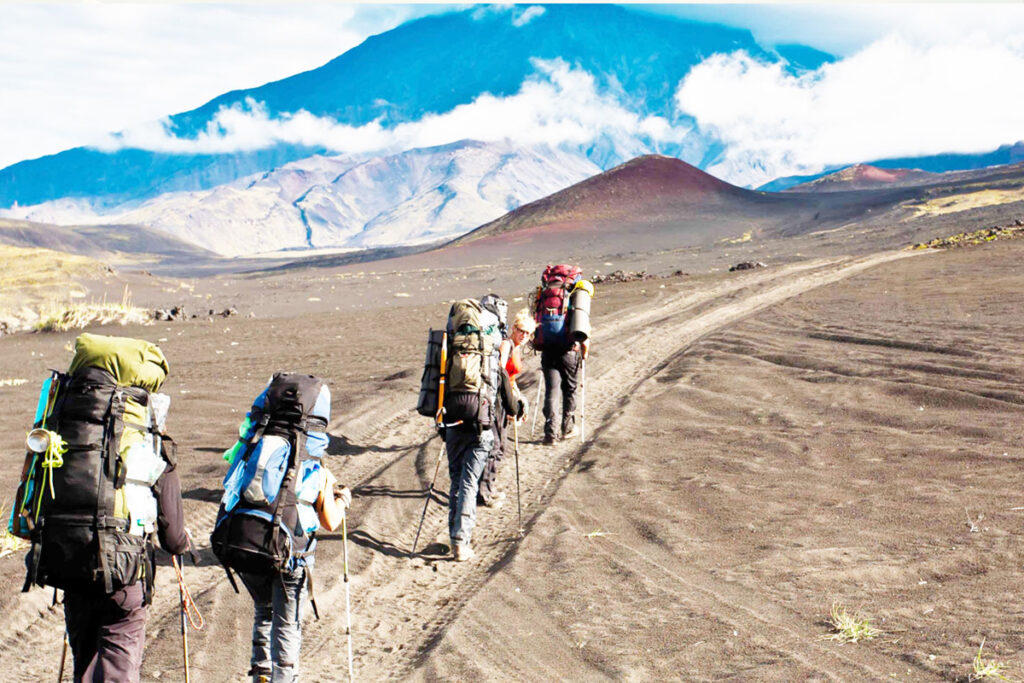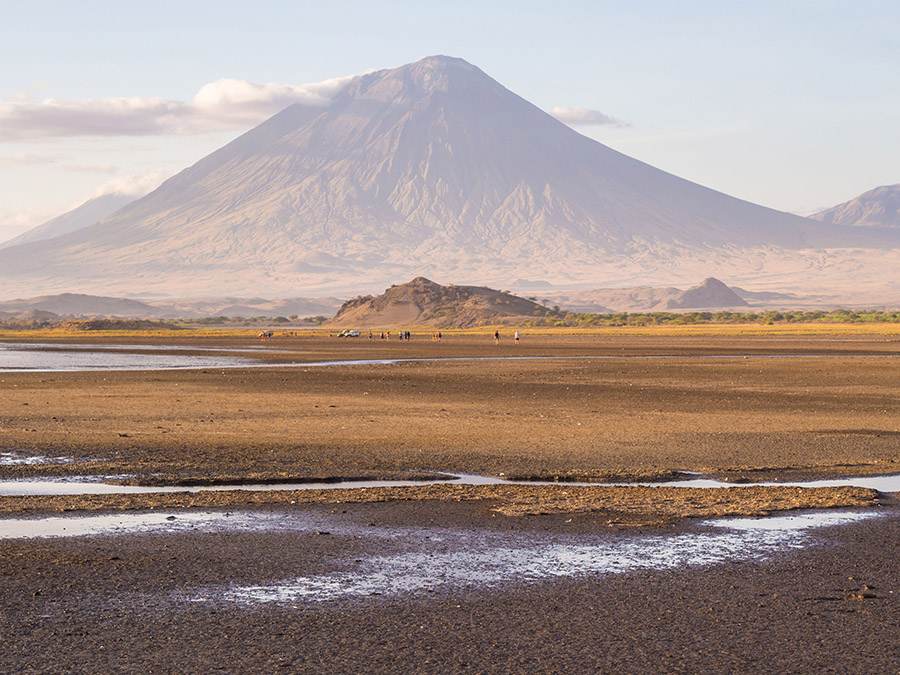Ol Doinyo Lengai Mountain, located in Tanzania near Lake Natron, is a sacred volcano to the Maasai people. Learn about its unique features, cultural significance, and how to visit this stunning natural wonder.
Ol Doinyo Lengai Mountain
Ol Doinyo Lengai Mountain
Ol Doinyo Lengai volcanic mountain stands at altitude of 2962 meters (9711 feet) above sea level, is a unique and extremely captivating volcano that towers above the East African Rift Valley in Northern Tanzania, just south of Lake Natron. It is the only volcano in the world that sometimes erupts natro-carbonatite lava, a highly fluid lava that contains almost no silicon.
Natro-carbonatite lava is also much cooler than all other lavas, at about 950 degrees F (510 degrees C) compared to temperatures over 2000 degrees F (~1100 degrees C) for basaltic lavas. Natro-carbonatite is the most fluidity lava in the world. Lava with a low gas content can flow like a whitewater stream, and actually has a viscosity near that of water.Natro-carbonatite lava glows orange at night, but is not nearly as bright as silicon-based lavas since it is not as hot. During the day it is not incandescent, most flows look like very fluid black oil, or brown foam, depending on the gas content. In the past, some visitors to the crater believed they were seeing mud flows. Most newly solidified lava is black and contains crystals that sparkle brightly in the sun.
There are also sometimes small flows known as “squeeze-ups” that are light gray when they flow and harden. Contact with moisture rapidly turns natrocarbonatite lava white because of chemical reactions that occur when the lava absorbs water. Eventually the water absorption process turns lava flows into soft brown powder. During dry weather the whitening of flows happens over a period of a few days to a couple of weeks, depending on the thickness of the flow. In rainy weather the lava surface turns white immediately.
In parts of the crater that have been inactive for several months, the ground is light brown/white and so soft that one sinks into it when walking. Ol Doinyo Lengai also has phases of explosive activity during which the composition of the lava may contain much more silicate material, reducing its viscosity. In this type of eruption there is no fluid lava and activity takes the form of ash eruptions accompanied by ejection of blocks and bombs. However, initial phases of an explosive eruption may include strong lava fountains. The two most recent explosive eruptions occurred during 1966-1967 and 2007-2008.
Since the mid 1980’s, lava flows, and to a much lesser extent, explosive eruptions, have been witnessed by many observers of Ol Doinyo Lengai. Natro-carbonatite lava eruptions are usually centered in one or more small cones that have been formed on the crater floor by previous eruptions of lava.
The activity is not well understood but is thought to be a function of the plumbing of the crater, the level of the lava within the plumbing, and the gas content of the lava. No one knows what causes the lava to flow out at any particular time or how the various vents in the crater are interconnected.
Mineralogists would like to understand how the lava evolves under the surface and why it has its unusual chemical composition, but that also is unknown, although there are several theories. Finally, no one has any idea why the pattern of frequent small lava flows gave way to explosive activity at the end of August 2007 and how that may have related to earthquakes in the region during the previous two months.
Cultural and Spiritual Significance
Aside from its unique lava composition, Oldoinyo Lengai is also culturally and spiritually significant to the Maasai people who reside in the area. The mountain is considered a sacred site and is believed to be the home of their god, Engai. The Maasai have lived in the region for centuries, adapting to the harsh conditions of the semi-arid landscape.
A Challenging and Rewarding Ascent
The ascent of Oldoinyo Lengai is a challenge that is worth the reward for experienced hikers and climbers. The climb to the summit is steep and rugged, with loose rocks and scree making the footing difficult. However, the views from the top are breathtaking, with sweeping vistas of the surrounding landscape and the nearby Lake Natron, which is known for its high concentration of salt and mineral deposits.
Important Considerations
Despite its remote location and challenging climb, Oldoinyo Lengai has become a popular destination for adventure seekers and geology enthusiasts around the world. However, it is important to note that climbing the mountain can be dangerous and should only be attempted with experienced guides and proper safety equipment.
Ask Our Expert




